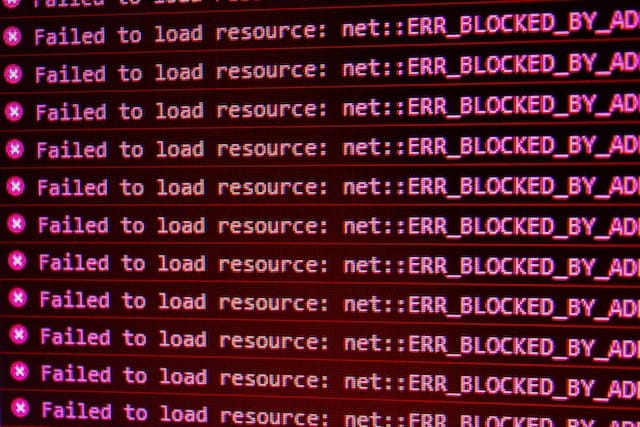Welcome to our in-depth exploration of React XML External Entities (XXE) vulnerabilities and their impact on your application’s security. In this informative article, we’ll dive into the world of XXE in the React tech stack and share valuable insights to help you stay protected.
Join us on this journey to master XXE prevention in React and ensure the safety of your application. Together we can unravel the mysteries of React XML External Entities together as we discuss:
- The fundamentals of XML External Entities and their role in React
- Spotting XXE vulnerabilities lurking in your platform
- Proven mitigation techniques to safeguard your application
- Handy tools to boost your security game and fend off XXE threats
Now, it’s crucial to emphasize that we will be exploring XML External Entity attacks in the context of the React development stack. So, to get the most out of this article, you need experience with JavaScript and the React platform. However, if you are just curious about XML External Entities in general, check out this article.
What Are XML External Entities?
XML, or Extensible Markup Language, is a markup language and file format for storing, transmitting, and reconstructing arbitrary data. In addition, this language is used in the programming world to define rules for encoding documents in a format that is both human-readable and machine-readable.
Alright then, but how can a file structure become a threat to your application?
By default, XML processing tools allow the specification of an external entity, a URI, retrieved and processed during the XML file parsing. In the process of file parsing, XML processing code can retrieve these external entities without validation.
Attackers can circumvent your security measures by requesting and embedding the content on the specified external entity inside the XML document. This is essentially an open back door. An attacker could leverage this property as an avenue to retrieve any resource.
In a nutshell, an XML External Entities attack, or XXE injection, is an attack that takes advantage of XML parsing vulnerabilities. It targets systems that use XML parsing functionalities that face the user and allow an attacker to access files and resources on the server. XXE injection attacks can include disclosing local files containing sensitive data, such as passwords or private user data using file: schemes or relative paths in the system identifier.
In essence, this vulnerability could render your server insecure given enough persistence and time.
Looking for XML External Entities
The following example is a bare-bones XML document containing an item XML element.
<item id="1">
<title>Toilet Paper</title>
</item>Great, but where’s the external entity?
You would represent an external entity by using a system identifier within a DOCTYPE header.
<!ENTITY xxe SYSTEM "https://www.google.com" >]>The purpose of this header is to add more properties to the XML data structure. To illustrate this further, the code below contains an external XML entity that would try to compromise a potentially perpetual file.
<!ENTITY xxe SYSTEM "file:///gkr/rand" >]>
<item id="1">
<title>&xxe;</title>
</item>This attack would result in a denial of service (DoS) attack and bring your server to its knees. Yikes!
As we’ve mentioned in other articles, these entities can access local or remote content, so you need to protect the sensitive files on the server. By not doing so, you could potentially provide an attacker with a way to gain control of your website. Game over.

By no means is this a thorough explanation of XML External Entities or XXE attacks. Exploring all the complexities of this vulnerability is beyond the scope of this article. But you can take a deeper dive here.
A Simple Way to Mitigate React XML External Entities
Alright, now to the practical part: how can you fix this mess? Thankfully, most of the work has already been done for you.
Generally, as long as you are not intentionally trying to open a window for the vulnerability and consider that you need the functionality of loading user-provided XML files, you don’t have to worry much about this issue.
Let’s illustrate.
As we have mentioned, if an application has an endpoint that parses XML files, an attacker could send a specially crafted payload to the server and obtain sensitive files. The files the attacker can get depend heavily on how you set up your system and how you implement user permissions.
So, to prevent this situation from playing out, first, don’t use libraries that support entity replacement.
Luckily, JavaScript has no popular XML parsing libraries with such a problem.
Generally, you have done most of the work as long as you keep your libraries updated. Your application is likely implementing react-xml-parser, which already comes with protections against this vulnerability. Additionally, for most libraries, external entities are disabled by default.
A straightforward example of a protected implementation on React would be the following:
var XMLParser = require('react-xml-parser');
var xml = new XMLParser().parseFromString(xml_text);
console.log(xml);Additionally, if your platform does require the use of external entities, you can safelist known external entities to minimize the potential for exploits.
Other Strategies
Here are some other strategies you can take to mitigate XXE Injection attacks:
- Use simpler data formats like JSON and avoid serialization of sensitive data.
- Patch or upgrade all XML processing code and libraries in your application.
- Verify that XML file upload validates incoming XML using XSD validation.
- Update SOAP to SOAP 1.2 or higher.
- Use SAST tools to help detect XXE in source code.
Finally, as a rule of thumb, do not implement the processing of XML unless it’s an application requirement. There are numerous ways to offer similar features without opening your application to threats.
The most practical mitigation approach to vulnerabilities is to not be open to them in the first place.
What Now?
Providing robust and secure services is becoming more and more complicated. Projects of that caliber now require a significant investment of time and extensive expertise. That is why understanding and addressing React XML External Entities (XXE) vulnerabilities early is crucial for securing your application.
By learning to spot and mitigate these threats, as well as leveraging appropriate tools, you’ll be well-equipped to safeguard your platform. Keep refining your knowledge and stay vigilant to ensure a secure and robust React application.
This post was originally written for and published by StackHawk.com





Leave a Reply